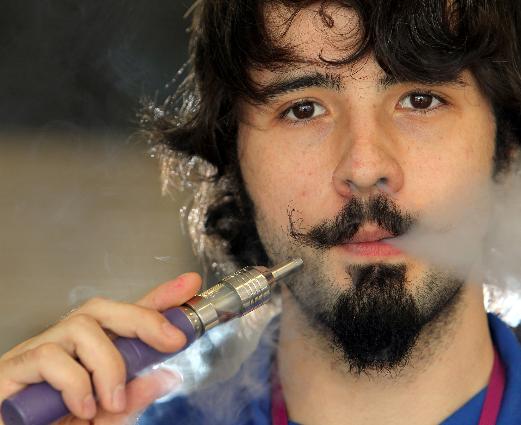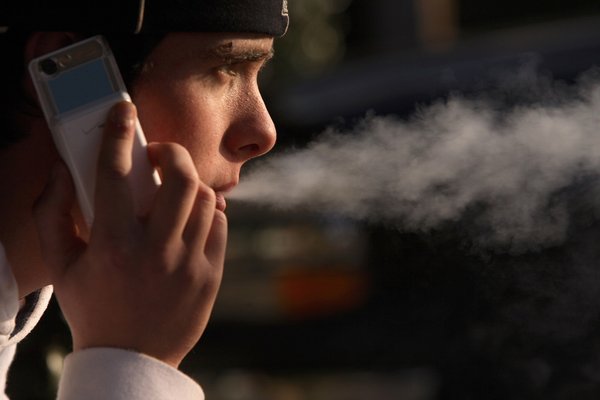CHUCK NORRIS EXTINGUISHES THE E-CIGARETTE CRAZE
Question to Norris: Chuck, my son joined the train of those who are smoking e-cigarettes. He claims they are better for him than regular smoking and that’s why he does it. Do you have any thoughts on this latest fad? – “Eliminate the E-Cigs, Too,” in Elko, Nev.
Answer: E-cigarettes have become more than just one of the latest crazes among our culture. Vaping, which is the process of “smoking” or inhaling e-cigs, is a billion-dollar business in the U.S. and has its own subculture. Rather than devices that merely look like cigarettes, whole new breeds of smokeless apparatuses to help users get their next nicotine fix have been spawned by vaping.
Technically speaking, vaping isn’t smoking, at least according to its veteran users. Nevertheless, a user is viewed as inhaling and exhaling vapor that is generally mimicking smoke.
For the record, according to the Macmillan English Dictionary, “E-cigarettes are battery-powered devices that provide inhaled doses of nicotine through a vaporized solution.” They generally utilize a heating element to vaporize that nicotine cocktail.
E-liquid, aka e-juice, is normally composed of four or five ingredients, according to Project:Vape:
1) Vegetable glycerin and/or propylene glycol makes up 80-90 percent. These are touted as “generally considered safe for consumption” because they are “widely used as food additives in a variety of commercially available products.”
2) Flavor makes up 10-20 percent. These are generally food-grade flavorings intended for baking or candy making.
3) Nicotine makes up 0-2.4 percent, depending upon potency. But according to The New York Times, “Most range between 1.8 percent and 2.4 percent, concentrations that can cause sickness, but rarely death, in children. But higher concentrations, like 10 percent or even 7.2 percent, are widely available on the Internet.” (I will speak later about the potential hazards of such high dosages.)
4) Potency prompts some manufacturers to use distilled water to dilute the chemicals.
The pitch of e-cigarettes is that they are a safer alternative to smoking. Supporters say e-juice is much less harmful than tobacco, which contains tar and other chemicals that cause cancer. Some even use e-cigarettes as a way to cut down on and quit smoking.
There is selective research that says vaping may be as effective as nicotine patches in terms of quitting smoking, but a new study documented in JAMA Internal Medicine showed that those who vaped were no likelier to quit or even smoke less than tobacco smokers. (It should be noted, however, that those who smoked e-cigarettes represented only 10 percent of those in the study.)
The Boston Globe reported: “Researchers followed nearly 1,000 smokers for a year and found that those who used e-cigarettes were no more likely to quit smoking or reduce their dependence on tobacco cigarettes than those who weren’t using the products at the beginning of the study. About 14 percent of those who didn’t use e-cigarettes quit smoking compared to 10 percent of those (who) used the products.”
I have two primary concerns about e-cigarettes. The first is that there is a significant increase of use among minors. Despite the fact that e-juice’s chemicals are less harmful than tobacco, nicotine is still an addictive drug. And in liquid form, potency and ingestion (let alone unregulated chemical mixing) clearly pose greater risks among youths.
Neal L. Benowitz, a professor and specialist in nicotine research at the University of California, San Francisco, explained: “There’s no risk to a barista no matter how much caffeine they spill on themselves. Nicotine is different.”
The health risks were explained in a recent New York Times article, “Selling a Poison by the Barrel: Liquid Nicotine for E-Cigarettes.”
It noted, “Toxicologists warn that e-liquids pose a significant risk to public health, particularly to children, who may be drawn to their bright colors and fragrant flavorings like cherry, chocolate and bubble gum.”
Some even look similar to a 5-hour Energy drink, which is why many teens are mixing these vials of nicotine with energy drinks for a quick high, according to Fox News.
But e-juices can deliver far more than benign buzzes. The Times continued: “These ‘e-liquids,’ the key ingredients in e-cigarettes, are powerful neurotoxins. Tiny amounts, whether ingested or absorbed through the skin, can cause vomiting and seizures and even be lethal. A teaspoon of even highly diluted e-liquid can kill a small child.”
I mentioned earlier that higher concentrations are widely available on the Internet. The Times went on to discuss how a lethal dose at such levels could be “less than a tablespoon,” according to Dr. Lee Cantrell, director of the San Diego division of the California Poison Control System and a professor of pharmacy at the University of California, San Francisco. “Not just a kid. One tablespoon could kill an adult,” he said.
The Times further reported on increased poisonings: “Nationwide, the number of cases linked to e-liquids jumped to 1,351 in 2013, a 300 percent increase from 2012, and the number is on pace to double this year, according to information from the National Poison Data System. Of the cases in 2013, 365 were referred to hospitals, triple the previous year’s number.”
This is particularly alarming when one realizes, as the Los Angeles Times recently documented from a Centers for Disease Control and Prevention report, that e-cigarette use among minors has increased significantly. Case in point, the percentage of high-school students who have tried vaping has gone up significantly in recent years, from 4.7 percent in 2011 to 10 percent in 2012. One can only imagine how that percentage has increased in the past two years.
It’s no surprise, the LA Times continued, that “health advocacy groups, including the American Heart Assn., Tobacco-Free Kids and the American Cancer Society Cancer Action Network, have expressed concern that any delay on additional regulations would allow the fast-growing industry, which already counts billions of dollars of sales, to target more children.”
That is why even some of e-cigarettes’ biggest supporters are advocating some regulation. Chip Paul – CEO of Palm Beach Vapors, which operates 13 nationwide e-cigarette franchises and plans to open 50 more in 2014 – says: “It’s the wild, wild west right now. Everybody fears FDA regulation, but honestly, we kind of welcome some kind of rules and regulations around this liquid.”
Besides the health risks, my biggest problem with e-cigarettes remains that I’m just not a believer that introducing another popular addictive vice in society is going to help young, old or America. Instead of perpetuating a this-is-better-than-that drug consumerism – as many do with the marijuana vs. tobacco smoking debate – maybe we should simply start making healthier decisions by eliminating any and all potential health risks in our lives.
I’ve said it before: Justifying eating a plain doughnut over a glazed doughnut because it’s healthier doesn’t mean one is making a healthy decision that will empower the person for optimal human performance and longevity.
Write to Chuck Norris with your questions about health and fitness. Follow Chuck Norris through his official social media sites, on Twitter @chucknorris and Facebook’s “Official Chuck Norris Page.” He blogs at ChuckNorrisNews.blogspot.com.
Read more at http://www.wnd.com/2014/05/chuck-norris-extinguishes-the-e-cigarette-craze/#yATcDVs6ZQMUKGBU.99


